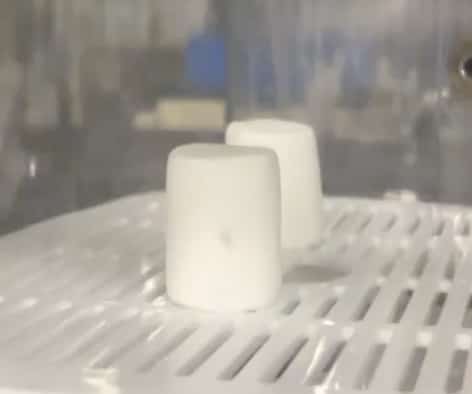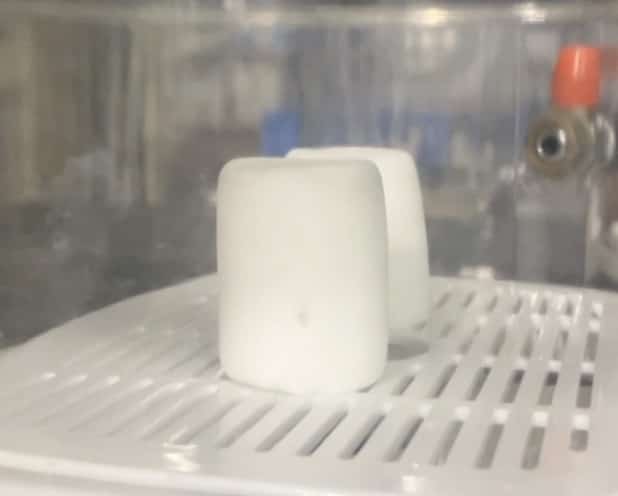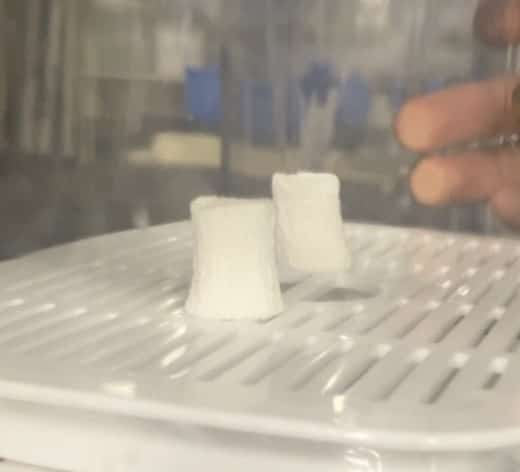The Marshmallow Massacre: What a Vacuum Chamber Teaches Us About Air Pressure and Space Travel
Ken Kuwako, Science Trainer here. Every day is an experiment.
Can you imagine a fluffy marshmallow puffing up like a balloon or shriveling down like a raisin? Recently, I stumbled upon my students doing exactly that in an elective class—a fascinating experiment! I couldn’t help but exclaim, “That’s cool!” and record the action.
The experiment is simple. They placed a marshmallow in a vacuum chamber (a machine that sucks out the air) and flipped the switch.
What happened next? As the air was removed, the marshmallow slowly swelled up. It looked like magic, maybe doubling its original size.


“Whoa!” the students cheered.
Then, they started letting the air back into the chamber, returning it to its original pressure. Would the swollen marshmallow go back to normal?
…Not quite! In a shocking twist, the marshmallow shrank even smaller than its original size and ended up all wrinkly.

What exactly happened to the marshmallow?

Why Did the Marshmallow Puff Up?
One student wondered, “Does the structure of the marshmallow have something to do with it?” Exactly! The fluffy texture of the marshmallows you eat comes from sugar and gelatin whipped into a foam. In other words, the secret to its fluffiness is the countless air bubbles trapped inside the marshmallow.
Here on Earth, the weight of the air (atmospheric pressure) is constantly pushing on the marshmallow from the outside. The air inside the marshmallow pushes back with the same force, keeping its shape.
But when we use the vacuum chamber to remove the surrounding air, the force pushing on the marshmallow from the outside is greatly reduced. The trapped air bubbles seize the chance to expand, making the entire marshmallow swell up like a balloon. This is because gases naturally increase in volume when the surrounding pressure decreases.
Why Did It Shrink and Shrivel?
So, why didn’t it return to its original state but instead shriveled?
Once the marshmallow expanded, it was like a balloon that had been over-inflated. The marshmallow’s structure—the walls (gelatin framework) supporting the air bubbles—was stretched or partly broken by the force of the expansion.
When the air is suddenly let back in, the marshmallow is violently squeezed by the strong external pressure. Since the internal framework is already damaged, it can’t withstand the external force. It’s like having broken bones that can no longer support the body.
As a result, the trapped air is forced out, and the marshmallow becomes smaller than its original size and permanently shriveled.
Potato Chip Bags and Space Suits
This “expanding when pressure drops” phenomenon is actually something we see nearby all the time.
Take a bag of potato chips, for example. If you take one up a high mountain (like Mt. Fuji), the bag will puff up. This is because the lower atmospheric pressure at high altitudes allows the air inside the bag to expand.
Taking it up a scale, this experiment also highlights the importance of space suits. Space is an ultra-low-pressure environment. If a person were exposed to space without a suit… just like the marshmallow, the air inside our bodies and the water in our blood would expand, leading to catastrophic results.
Isn’t it exciting to think that a simple marshmallow experiment connects to everything from mountain climbing to space exploration? Thanks to the students’ curiosity, I got to discover a wonderful science story today.
Contact and Requests
Dive deeper into the wonders of science! I share fun, easy experiments you can do at home and the secrets behind them. Feel free to search for more! ・Learn more about the content of the Science Notebook (in Japanese) here ・About the operator, Ken Kuwako (in Japanese): here ・For various requests (writing, lectures, workshops, TV supervision, appearances, etc.) (in Japanese): here ・Updates on new articles are posted on X!
![]() The Science Story Channel features experiment videos!
The Science Story Channel features experiment videos!

